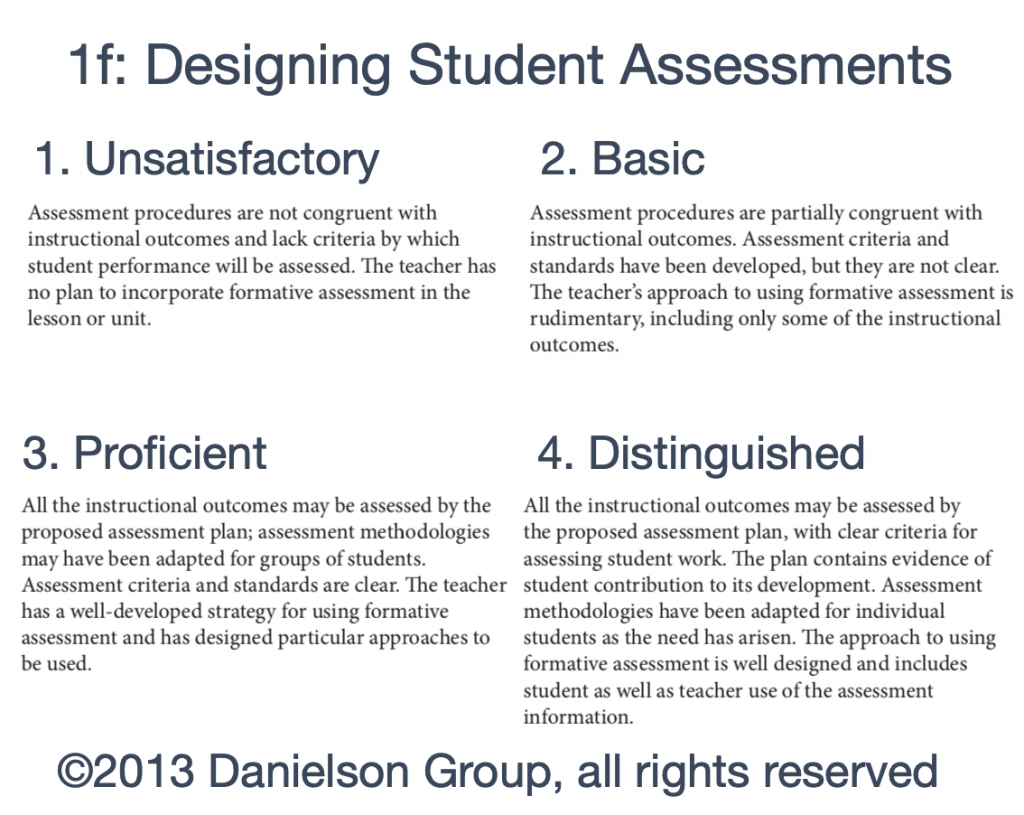How can you make your vision for improvement specific and actionable?
The most direct way is to turn your instructional vision into an instructional framework.
What's an instructional framework?
I've been thinking about it all morning as I and my co-author work on our new book.
It's essentially a rubric for practice, but we've decided not to use the term rubric, because the purpose is different.
You might use a rubric to score student work, like a term paper or an oral presentation.
But an instructional framework isn't about what practice looks like to an observer…
…so we don't want to load it up with checklist items or “look-fors.”
When we're thinking about improving practice, we habitually ask “what does it look like?” but that's the wrong question here.
We want the practitioner's “inside view” of the practice.
Why?
Because the purpose of an instructional framework isn't to make it easier to assess practice.
It's to make it easier to improve practice.
(Those might sound like the same thing—assessment and improvement are closely linked—but they have different “users.” The practitioner—the teacher—is the main user of an instructional framework, because teachers are the ones who do the improving.)
For example, Charlotte Danielson's Framework for Teaching is the best-known and best-designed rubric for K-12 teaching practice. It covers all grades, all subject areas, and lends itself pretty well to evaluation—but it's primarily designed for improvement.
Just look at how much of what matters most isn't directly observable—for example:

None of this would be very visible during an observation, but it's absolutely central to using assessment well.
Now, if the Danielson Framework was the only instructional framework you ever used, you could lead a very effective professional growth process, and your teacher evaluations would be amazing.
But you have a vision—a more specific vision.
There are unique goals and emphases that will take your school to the next level.
Perhaps not even the whole school—perhaps just one team or department.
That's where teachers can see the most rapid growth, because they can develop and use frameworks that focus on what they're actually doing.
(As great as the Danielson Framework is, you can't “do” it—it's not a specific practice; it's more about the overall responsibilities of a teacher.)
Imagine getting this clear and specific about the specific strategies you're using as a school.
That's what an instructional framework can do for you.
